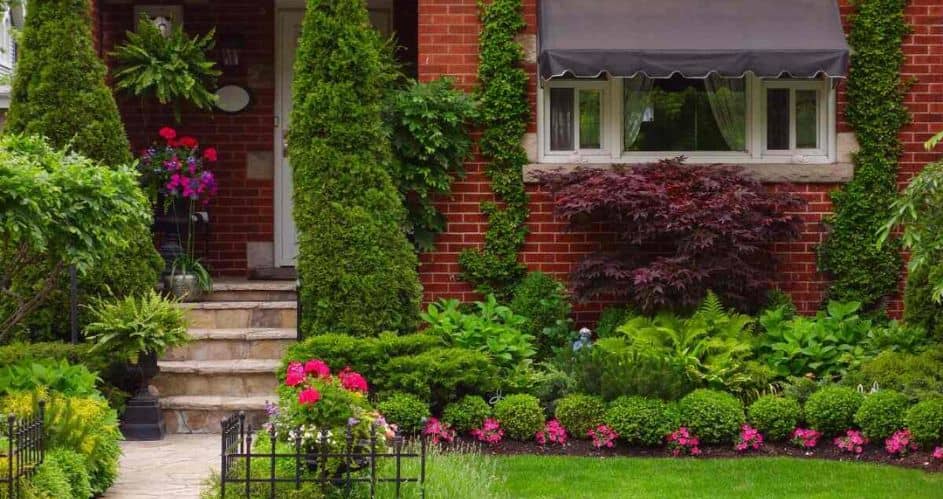
Creating a beautiful and healthy lawn doesn’t have to be a time-consuming or difficult task. With the right strategies, it’s entirely possible to maintain a vibrant yard that requires minimal effort.
This comprehensive guide will provide you with effective strategies for low-maintenance yard care, allowing you to enjoy a hassle-free lawn all year round.
Hassle-Free Lawn Care: Effective Strategies
1. Choosing the Right Grass
The first step towards a low-maintenance lawn is choosing the right grass. Some types of grass are more drought-resistant, and disease-resistant, and require less mowing than others.
For example, Buffalo grass, Bermuda grass, and Zoysia grass are known for their low-maintenance qualities. They can thrive in various conditions and require less watering and mowing compared to other grass types.
2. Watering Wisely
While all lawns need water to thrive, overwatering can lead to a host of problems including disease and weed infestation. To maintain a healthy, low-maintenance lawn, it’s important to water deeply but infrequently.
This encourages the grass to develop deep roots, making it stronger and more drought-resistant. Ideally, your lawn should receive one inch of water per week, including rainfall.
You can talk to the experts at https://www.greenlawncareinc.com/ to pinpoint the perfect watering strategy for your lawn. They will evaluate the specific characteristics of your lawn, such as grass type, soil type, sun exposure, slope, and drainage. By understanding these factors, they can determine the watering requirements and potential challenges unique to your lawn.
If you have an existing irrigation system, lawn care professionals can evaluate its efficiency and effectiveness. They will check for leaks, damaged or misaligned sprinkler heads, and assess whether the system is providing even coverage across the lawn. If improvements or repairs are needed, they can recommend adjustments or upgrades to ensure efficient water distribution.
3. Implementing a Mulching Strategy
Mulching is an effective strategy for maintaining a healthy lawn with less effort. Organic mulch, like compost or shredded bark, improves soil health by adding nutrients and beneficial microorganisms.
It also helps retain soil moisture, reducing the need for frequent watering. Plus, it acts as a natural weed barrier, preventing weed seeds from germinating.
4. Using Slow-Release Fertilizers
Slow-release fertilizers are a great choice for low-maintenance lawns. They gradually release nutrients into the soil over a period of time, reducing the need for frequent applications.
Additionally, they’re less likely to burn your lawn compared to fast-release fertilizers. Look for a balanced fertilizer that contains all the necessary nutrients your lawn needs to thrive.
5. Embracing Ground Cover Plants
Ground cover plants are an excellent alternative to traditional grass lawns. They’re typically more drought-tolerant and disease-resistant, requiring less maintenance.
Some popular options include clover, thyme, and creeping jenny. These plants add texture and color to your yard, and many even produce beautiful flowers.
6. Regular Aeration
Aeration is the process of creating small holes in your lawn to allow air, water, and nutrients to penetrate the grass roots. This helps the roots grow deeply, resulting in a stronger, more vigorous lawn.
The main reason for aerating is to alleviate soil compaction, which can prevent the proper circulation of air, water, and nutrients within the soil. Regular aeration by experts at Heroes Lawn Care can reduce maintenance needs by keeping your lawn healthy and reducing its susceptibility to diseases and pests.
7. Implementing Proper Mowing Techniques
How you mow your lawn can significantly impact its health and maintenance needs. For a low-maintenance lawn, consider raising the cutting height of your mower. Taller grass shades the soil, reducing water evaporation and preventing weed growth.
Additionally, it’s advisable to keep your mower blades sharp to ensure clean cuts and avoid damaging the grass. Lastly, consider leaving grass clippings on the lawn after mowing. They’ll decompose and return valuable nutrients back to the soil, reducing the need for fertilization.
8. Adopting an Integrated Pest Management Approach
Pests can pose a significant challenge to maintaining a low-maintenance lawn. Instead of relying solely on pesticides, consider an integrated pest management (IPM) approach.
This involves regular monitoring for pests, maintaining healthy soil, promoting beneficial insects, and using pesticides only as a last resort. By adopting an IPM approach, you can effectively manage pests with less reliance on chemical treatments, ultimately reducing your lawn’s maintenance needs.
Conclusion
In conclusion, creating a low-maintenance, hassle-free lawn involves a combination of smart strategies right from the start.
From choosing the right type of grass, watering wisely, mulching, using slow-release fertilizers, embracing ground cover plants, regular aeration, and proper mowing techniques, to adopting an integrated pest management approach, each step plays a crucial role in reducing your yard’s maintenance needs.
Remember, the goal is to create a sustainable lawn that’s not only beautiful and easy to care for but also contributes positively to the environment. With these strategies, you can enjoy a vibrant, healthy lawn with minimal effort.